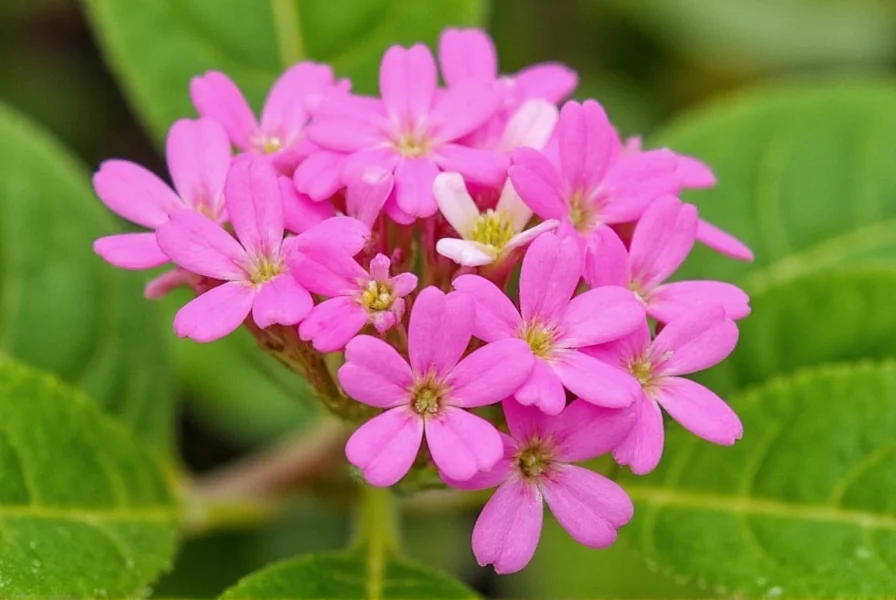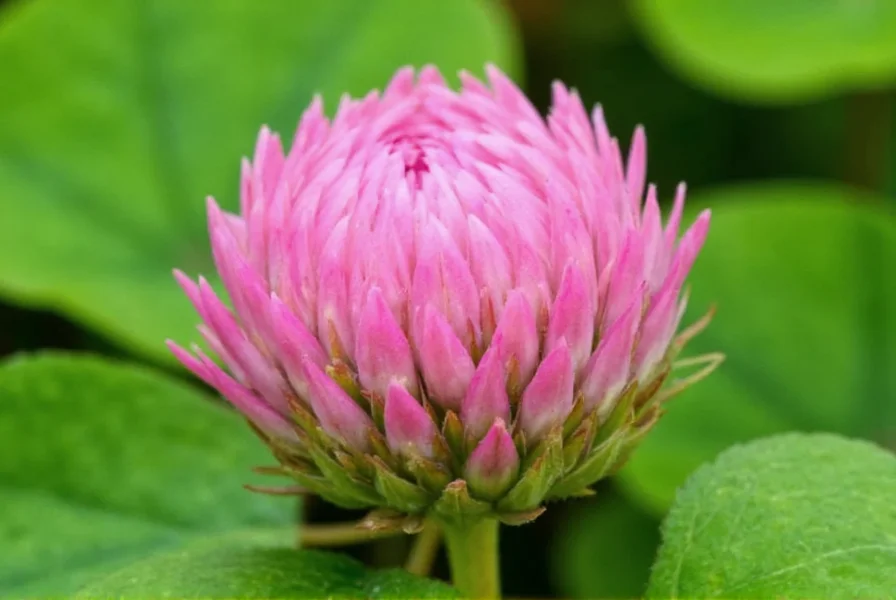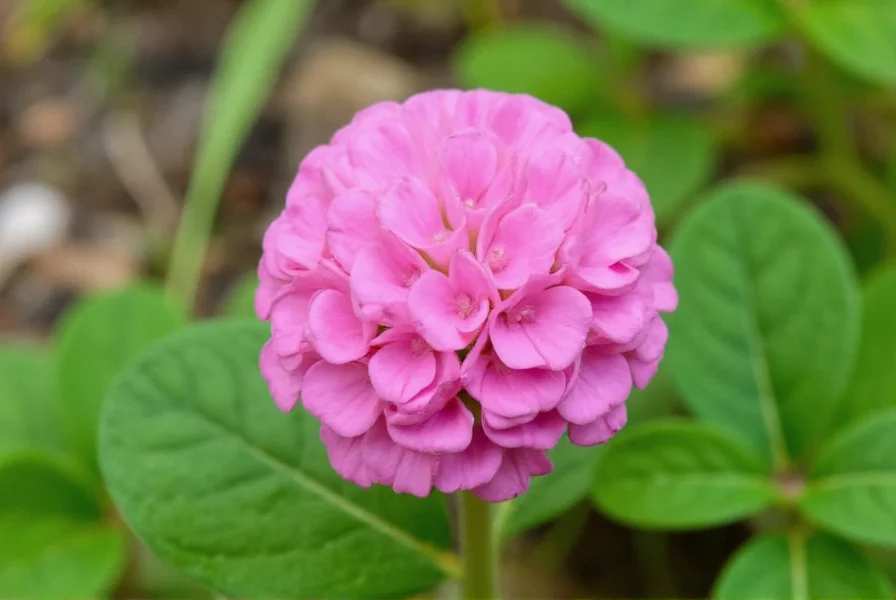Pink clover isn't a single botanical species but rather describes several clover varieties with pink-hued flowers. Understanding these plants requires examining their botanical characteristics, growing requirements, and ecological benefits. This comprehensive guide explores everything you need to know about these valuable flowering plants.
Botanical Classification and Species
When gardeners and botanists refer to "pink clover," they're typically discussing one of three primary species:
| Species | Common Name | Flower Color Range | Height |
|---|---|---|---|
| Trifolium pratense | Red Clover | Pink to purple | 12-20 inches |
| Trifolium incarnatum | Crimson Clover | Bright pink to crimson | 12-24 inches |
| Trifolium hybridum | Alsike Clover | Pink turning to cream | 12-18 inches |
Red clover (Trifolium pratense) represents the most common "pink clover" encountered in North America and Europe. Despite its name, its flowers range from light pink to deep purple. This perennial plant features distinctive three-lobed leaves with pale crescent markings and dense flower heads containing numerous small individual blossoms.
Identification Characteristics
Accurately identifying pink clover varieties requires examining several key features:
- Flower structure: Dense, globe-shaped flower heads composed of many small tubular flowers
- Leaf pattern: Three oval leaflets with distinctive pale crescent-shaped markings
- Stem texture: Red clover has hairy stems while alsike clover stems are smooth
- Growth habit: Upright growth pattern compared to white clover's creeping habit
One common point of confusion involves distinguishing pink clover varieties from look-alikes such as black medic or hop clover. True clovers always have three leaflets per stem and produce characteristic pea-family flowers, while black medic features yellow flowers and a different leaf structure.

Natural Habitat and Distribution
Pink clover species thrive in temperate climates worldwide. Red clover grows naturally across Europe, Western Asia, and North Africa, but has been introduced throughout North America. It prefers:
- Well-drained loamy soils with neutral to slightly alkaline pH
- Full sun to partial shade conditions
- Meadows, roadsides, and disturbed areas
- USDA hardiness zones 3-10
Unlike white clover which tolerates heavy foot traffic, pink clover varieties generally prefer less disturbed environments. They often appear in fields, along fence rows, and in open woodland areas where competition from taller plants is limited.
Growing Pink Clover in Your Garden
Many gardeners intentionally cultivate pink clover for its beauty and ecological benefits. For successful growth:
- Plant seeds in early spring or fall when soil temperatures reach 55-75°F
- Prepare soil by removing weeds and loosening the top 2-3 inches
- Sow seeds at 1/4 inch depth, spacing 6-8 inches apart
- Water regularly until established, then reduce frequency
- Avoid high-nitrogen fertilizers which reduce nitrogen-fixing benefits
When considering pink clover as a lawn alternative, remember it requires less mowing than traditional grass but doesn't tolerate heavy foot traffic. Many homeowners create clover-grass blends to balance aesthetics with durability. This approach to natural lawn alternatives has gained popularity among sustainable gardening enthusiasts.

Ecological Benefits of Pink Clover
Pink clover varieties provide significant environmental advantages that make them valuable additions to any landscape:
- Nitrogen fixation: As legumes, they convert atmospheric nitrogen into soil nutrients, reducing fertilizer needs
- Pollinator support: Attracts bees, butterflies, and other beneficial insects throughout the growing season
- Soil improvement: Deep roots break up compacted soil and improve water infiltration
- Erosion control: Dense root systems stabilize soil on slopes and bare areas
- Wildlife value: Provides food for various bird and mammal species
For organic gardeners seeking natural soil amendments, pink clover serves as an excellent green manure crop. When tilled into the soil before flowering, it releases nitrogen that benefits subsequent plantings. This sustainable gardening practice reduces reliance on synthetic fertilizers while improving soil structure.
Common Misconceptions About Pink Clover
Several myths persist about pink clover that deserve clarification:
- Misconception: All pink clover is red clover
Reality: "Pink clover" describes multiple species including crimson and alsike varieties - Misconception: Pink clover invades lawns aggressively
Reality: It establishes readily but doesn't spread as aggressively as white clover - Misconception: Pink clover attracts too many bees for safe gardening
Reality: While it does attract pollinators, bees rarely sting when foraging on flowers - Misconception: Pink clover depletes soil nutrients
Reality: It actually enriches soil through nitrogen fixation
Practical Applications for Home Gardeners
Home gardeners can utilize pink clover in numerous ways beyond traditional planting:
- Create living pathways between garden beds using low-growing varieties
- Plant as a cover crop in vegetable gardens during off-seasons
- Use in container gardens for pollinator-friendly balconies and patios
- Establish as a low-maintenance ground cover in difficult areas
- Combine with native grasses for naturalized meadow areas
For those interested in edible landscaping, red clover flowers make attractive additions to salads and can be used to make herbal teas. However, always properly identify plants before consumption and consult with experts about safe usage. This aspect of pink clover gardening connects to broader interests in edible flower gardening and natural herbal remedies.
Maintenance and Care Tips
While pink clover requires less maintenance than traditional lawns, proper care ensures optimal growth:
- Mow occasionally to encourage denser growth (every 3-4 weeks)
- Water deeply but infrequently once established
- Avoid chemical herbicides which harm beneficial insects
- Re-seed sparse areas every 1-2 years to maintain density
- Remove spent flower heads to prevent excessive self-seeding
During drought periods, pink clover may go dormant but typically recovers when moisture returns. This drought tolerance makes it suitable for water-wise gardening approaches, particularly in regions experiencing increasing water restrictions.
Frequently Asked Questions
Is pink clover the same as red clover?
While often used interchangeably, "pink clover" typically refers to red clover (Trifolium pratense), which features pink to purple flowers. However, the term can also include other species like crimson clover (Trifolium incarnatum) that have pink blossoms. Red clover specifically describes Trifolium pratense, the most common pink-flowered clover variety.
How do I distinguish pink clover from white clover?
Pink clover (typically red clover) has pink to purple flowers and upright growth habit, while white clover has white or pink-tinged flowers and a creeping growth pattern. Pink clover leaves feature more prominent pale crescents and the stems are often hairy. White clover stays much closer to the ground and tolerates foot traffic better than pink varieties.
Can I grow pink clover in my lawn instead of grass?
Yes, many homeowners successfully replace traditional grass with pink clover varieties. Red clover makes an attractive, low-maintenance lawn alternative that requires less mowing, watering, and fertilizing than conventional turf grass. However, it doesn't tolerate heavy foot traffic as well as grass, so consider a clover-grass blend for high-traffic areas. This sustainable lawn alternative has gained popularity among eco-conscious gardeners.
Does pink clover attract bees and other pollinators?
Yes, pink clover is highly attractive to bees, butterflies, and other beneficial pollinators. Its nectar-rich flowers provide excellent food sources throughout the growing season. While this makes it valuable for supporting pollinator populations, gardeners with bee allergies should exercise caution. The presence of pollinators actually represents one of pink clover's most valuable ecological benefits for garden ecosystems.
How do I control pink clover if it becomes too widespread?
If pink clover spreads beyond desired areas, the most effective control methods include regular mowing before seed set, hand-pulling young plants, or creating physical barriers. Avoid chemical herbicides if possible, as they harm beneficial insects. For garden beds, maintaining a thick mulch layer prevents clover seed germination. Remember that some spread is natural for this plant, and complete elimination may require persistent effort.











 浙公网安备
33010002000092号
浙公网安备
33010002000092号 浙B2-20120091-4
浙B2-20120091-4